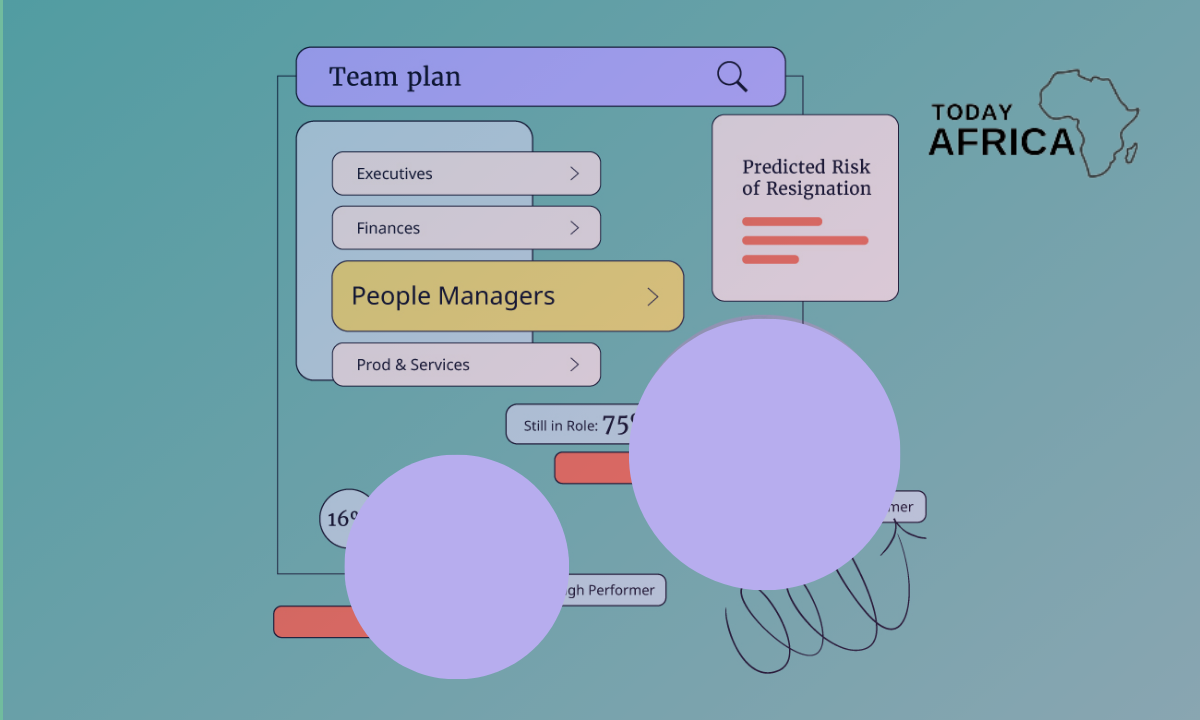Creating a scalable business model is key for businesses that want to grow without breaking down or requiring increasingly complex resources.
So whether you’re an entrepreneur starting a new venture or a business leader looking to expand, building a model that scales ensures sustainable growth, efficient resource allocation, and the ability to adapt to changing market conditions.
In this blog post, we’ll discuss how to create a scalable business model, key factors that make a model scalable, and a step-by-step approach to help you design a growth-ready framework.
What is a Scalable Business Model?
A scalable business model is one that can handle increased demand, production, and revenue without proportionally increasing operational costs or losing efficiency.
When a model is scalable, it grows profitably by capitalizing on existing processes and structures, allowing you to serve more customers and drive revenue with minimal additional investment.
For example, a software company with a scalable model can add new customers and expand its reach with little increase in cost, as the technology infrastructure (like cloud servers) can support multiple users simultaneously.
Why scalability matters
Building a scalable business model is not just a luxury—it’s a necessity for companies looking to:
- Reach a larger market without exponential increases in cost.
- Maintain quality as they expand.
- Adapt quickly to industry changes and competition.
- Attract investors who are looking for sustainable growth potential.
In short, scalability enables a business to meet growth opportunities and avoid pitfalls associated with expanding too fast without the right foundation.
Characteristics of a scalable business model
Before we get into the steps to build one, let’s examine the primary traits that make a business model scalable:
- Efficient processes: Standardized and repeatable processes make it easier to increase output without increasing complexity.
- Automation: Automation reduces labor costs and minimizes human error, allowing growth without relying heavily on workforce expansion.
- Adaptable infrastructure: Flexible infrastructure (like cloud technology for IT) that can scale up or down based on demand is essential.
- Cost-effective customer acquisition: Scalable models typically rely on a customer acquisition strategy that balances growth with spending.
- Resilient supply chain: A scalable business can handle increased demands in production and logistics without significant operational strain.
How to Create a Scalable Business Model (Step-By-Step Guide)
1. Start with a strong value proposition
Every successful business model begins with a clear and compelling value proposition. This is your answer to why customers should choose your product or service over competitors. It must:
- Solve a real problem for a specific audience.
- Be unique enough to distinguish you from competitors.
- Be easy to communicate to your target market.
This clarity not only attracts customers but also simplifies your strategy as you grow, making it easier to replicate the same message and offerings across different scales.
2. Design with the end in mind
Begin by outlining what “scaling up” means for your business. Set clear, long-term goals and design the structure to meet these milestones. This helps in identifying the systems and processes that can be leveraged at a larger scale. For example:
- Digital businesses: Focus on cloud infrastructure, software-as-a-service (SaaS) frameworks, and high-availability servers.
- Retail businesses: Create streamlined supply chain processes, inventory management, and customer service that can support increased sales volume without heavy reinvestment.

3. Build repeatable processes
A scalable business model relies on processes that can be repeated with minimal changes. Consider how you can build systems around core functions:
- Customer support: Use CRM systems and automated tools to handle increasing customer inquiries.
- Sales and marketing: Implement digital marketing strategies, SEO, and social media automation to reach more people without needing a massive sales team.
- Product delivery: Streamline the production and delivery process, possibly through outsourcing or partnering with third-party logistics (3PL) providers.
Read Also: How to Use Social Media Marketing to Grow Your Business
4. Invest in technology and automation
Automation is the backbone of any scalable business. Technology should be used to optimize tasks that are repetitive or prone to human error. Here are some key areas to consider:
- Automated marketing campaigns: Use tools like email marketing, social media scheduling, and pay-per-click ads that can run independently and at scale.
- Inventory management software: For physical products, implement systems that monitor stock levels and automate reordering.
- Data analytics: Leverage data analytics tools to monitor customer behavior, optimize pricing, and track performance metrics.
Automation not only reduces the time needed for routine tasks but also allows businesses to operate efficiently at any scale.
5. Focus on customer retention
Retaining customers is essential in a scalable model. Acquiring new customers can be expensive, and ensuring repeat business helps stabilize revenue growth. Effective strategies for customer retention include:
- Loyalty programs: Reward repeat customers with discounts or exclusive offers.
- Personalized marketing: Use data insights to tailor marketing to individual preferences.
- Exceptional customer service: Prompt and friendly service keeps customers returning and can be managed with automated customer service platforms.
6. Develop a flexible and efficient team structure
A scalable business doesn’t require a huge team; rather, it relies on a lean, efficient one. This means hiring skilled professionals and providing them with tools and autonomy to make decisions. Consider using:
- Outsourcing: Tasks like payroll, customer service, or content creation can be outsourced to specialized providers.
- Freelancers or contractors: Hire talent on an as-needed basis, avoiding the overhead costs of full-time employees.
- Cross-functional teams: These can adapt to different roles as the business needs change, helping the company grow with fewer hires.
7. Implement scalable financial models
Financial scalability involves minimizing costs and maximizing revenue growth. This could mean moving away from traditional, cost-heavy structures to models that offer flexibility, such as:
- Subscription models: Generate recurring revenue that increases with customer acquisition without extra costs.
- Freemium models: Attract more users with a free version, then convert some into paying customers.
- Revenue share: Partner with other businesses in a revenue-sharing model, allowing expansion without upfront capital.
Each of these financial models supports scalability by enabling consistent growth without significant upfront investments.
8. Monitor and adapt to market trends
A scalable business model is resilient and adaptable. Market demands, technology, and competition evolve rapidly, so businesses must stay flexible to remain competitive. Regularly assess:
- Customer needs: Run surveys and gather feedback to ensure your product or service stays relevant.
- Industry trends: Keep an eye on technological advancements and competitors’ moves to stay a step ahead.
- Performance metrics: Use KPIs to track growth, profitability, and customer satisfaction, and adjust the model as needed.
9. Build a strong brand identity
Branding is a vital factor for scaling a business. A recognizable and trustworthy brand helps attract customers, retain them, and expand into new markets. Elements of strong branding include:
- Consistent messaging: Ensure your brand message and values are consistent across all channels.
- Customer-centric approach: A brand that prioritizes customer needs builds loyalty and positive word-of-mouth.
- Visual identity: A memorable logo, brand colors, and other visual elements make it easy for customers to remember and relate to your brand.

10. Plan for funding and cash flow
Lastly, scalability requires a financial cushion. Expanding operations, hiring staff, and investing in technology all require capital. Here are funding options that align with scalability goals:
- Bootstrapping: Retain complete control but be ready to reinvest profits wisely.
- Venture capital: Attract investors looking for high-growth potential, though you may need to cede some control.
- Crowdfunding: Ideal for scalable, innovative products that appeal directly to consumers.
Each of these options can fuel growth but needs careful planning to ensure cash flow remains steady as the business scales.
Read Also: Top 15 Accounting Software for Startups in Africa This Year
Common Pitfalls to Avoid
While scalability offers immense rewards, there are common mistakes that businesses make when scaling:
- Expanding too quickly: Rapid expansion without solid infrastructure leads to poor customer experiences and financial strain.
- Neglecting quality control: Ensure that product quality or service standards don’t drop as you scale.
- Ignoring customer feedback: Customer feedback provides valuable insights; overlooking it can lead to missed opportunities for improvement.
- Underestimating costs: While scalable models are cost-efficient, some expenses (like software, logistics, or training) will increase with growth. Budget accordingly.
Conclusion
Building a scalable business model is a journey that requires a solid foundation, clear strategies, and consistent optimization.
By focusing on efficient processes, leveraging technology, developing adaptable structures, and monitoring financial health, you can create a model that grows seamlessly, responds to market changes, and maintains quality.
Scalability isn’t just about growing big—it’s about growing smart. With a well-designed model, your business can seize opportunities, handle increased demand, and achieve sustainable success for the long term.
Comment and follow us on social media for more tips:
- Facebook: Today Africa
- Instagram: Today Africa
- Twitter: Today Africa
- LinkedIn: Today Africa
- YouTube: Today Africa Studio
















